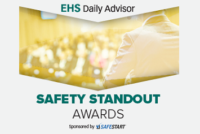Safety is a process, and as such, needs to be managed. This section offers resources to create a viable safety program, sell it to senior management, train supervisors and employees in using it, and then track and report your progress. Look also for ways to advance your own skills in these areas, both for your current job, and those that follow.
If you read the title of this article and thought to yourself, “The answer is right there—the ROI is worker safety!” you are correct—partially. The main incentive for purchasing lone worker safety products is, of course, to protect lone workers. However, there are other business factors at play.
Each year, countless accidents, injuries, and fatalities occur as a result of missing personal protective equipment (PPE) or the failure to properly wear the provided PPE. PPE minimizes exposure to biological, chemical, physical, safety, and ergonomic hazards, and it is the last line of defense between a workplace hazard and the worker. As important as […]
The Occupational Safety and Health Administration (OSHA) has increased compliance activities related to electrical safety regulations and standards over the past few years. This began with the heightened interest in arc flash hazards related to the 2000 National Fire Protection Association (NFPA) 70E standard and became more active after the 2004 edition was published.
The National Safety Council (NSC) has received an additional $500,000 grant from the Pittsburgh-based McElhattan Foundation for the NSC’s Work to Zero initiative, the Council announced. The program, launched last January, will educate employers about technological advancements in safety, such as artificial intelligence, drones, and wearables, that may reduce or eliminate preventable deaths in the […]
On January 15, the Occupational Safety and Health Administration (OSHA) raised its civil penalties (85 Fed. Reg. 2,292) by approximately 1.8%. The final rule implements annual inflation adjustments of civil monetary penalties assessed or enforced by OSHA and other agencies within the Department of Labor (DOL) in 2020, as required by the Inflation Adjustment Act […]
Despite the growing introduction of industrial exoskeletons across several industry sectors, their benefits and risks have not been well studied, the National Institute for Occupational Safety and Health (NIOSH) recently said in a scientific journal. Few studies have been made of the health and safety implications of using wearable exoskeletons, NIOSH said in commentary in […]
The National Institute for Occupational Safety and Health (NIOSH) released a draft strategic plan for studying motor vehicle safety issues over the next 10 years. The institute is seeking comment on its “Center for Motor Vehicle Safety (CMVS) Strategic Plan, 2020-2029.” Comments are due February 14, 2020.
The deadline for nominations for the EHS Daily Advisor’s Safety Standout Awards is now January 24, 2020! Here are answers to some frequently asked questions (FAQs) we’ve received about our awards program, including how you can apply and if applications are really free for download.
Companies are doubling down on contractors. A survey by supply chain analyst firm Verdantix and Avetta revealed 88% of companies expect to maintain or grow their use of contractors and suppliers with 18% of those companies expecting 10 percent or greater growth next year. An NPR/Marist poll says half of the entire U.S. workforce could […]
For those performing tasks in high-risk industries, personal protective equipment, or PPE, is their last line of defense. It’s important to be as informed as possible about all of the PPE necessary to performing a job safely, but you may have some questions about the proper uses of flame resistant (or FR) garments within your […]










